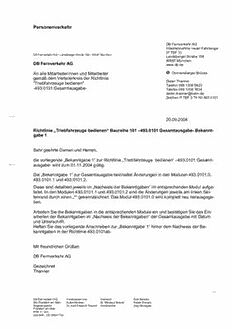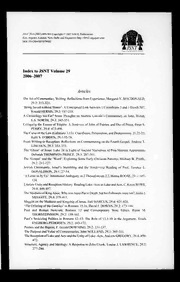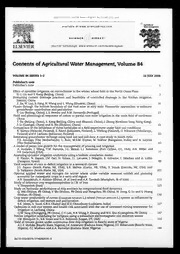
TAX ABATEMENTS TAX EXEMPTIONS - Nevada Legislature PDF
Preview TAX ABATEMENTS TAX EXEMPTIONS - Nevada Legislature
R O EPORT N T A , T E , AX BATEMENTS AX XEMPTIONS T I F E D AX NCENTIVES OR CONOMIC EVELOPMENT AND T I F AX NCREMENT INANCING N IN EVADA February 2009 REPORT ON TAX ABATEMENTS, TAX EXEMPTIONS, TAX INCENTIVES FOR ECONOMIC DEVELOPMENT AND TAX INCREMENT FINANCING IN NEVADA Prepared by the Fiscal Analysis Division, Legislative Counsel Bureau at the Direction of the Legislative Commission Staff Contact: Joe Reel, Deputy Fiscal Analyst Fiscal Analysis Division 401 South Carson Street Carson City, NV 89701-4747 (775) 684-6821 TABLE OF CONTENTS SECTION PAGE I. INTRODUCTION .................................................................................................................... 1 II. TAX ABATEMENTS GRANTED BY THE NEVADA COMMISSION ON ECONOMIC DEVELOPMENT ............................................................................................... 3 A. Statutory Authority for Granting Partial Abatements ................................................. 5 B. Eligibility and Requirements to Receive Partial Tax Abatements............................. 7 C. Criteria Defining Urban Areas Versus Rural Areas and Minimum Qualifications ............................................................................................... 11 D. Taxes That Can Be Abated .......................................................................................... 17 E. Administration of Partial Abatements ........................................................................ 21 F. Summary of Legislative Changes to Nevada Commission on Economic Development Abatements: 1999 to 2007 Legislative Sessions............ 23 G. Summary of Nevada Commission on Economic Development Abatements Approved: Fiscal Years 1999-2008 ....................................................... 34 H. Methods to Quantify Abatements Approved Versus Abatements Actually Used .......................................................................................... 42 I. Analysis of Nevada Commission on Economic Development Abatements Actually Used: Fiscal Years 1999-2008 ................................................ 46 J. Table Notes for Section II-I .......................................................................................... 59 K. End Notes for Section II ............................................................................................... 64 III. GREEN BUILDING TAX ABATEMENTS ........................................................................... 65 IV. SALES AND USE TAX EXEMPTIONS ............................................................................... 73 V. PROPERTY TAX EXEMPTIONS ........................................................................................ 77 VI. GOVERNMENTAL SERVICES TAX EXEMPTIONS ......................................................... 85 VII. LIVE ENTERTAINMENT TAX EXEMPTIONS .................................................................... 91 VIII. REAL PROPERTY TRANSFER TAX EXEMPTIONS ........................................................ 95 IX. TAX INCREMENT FINANCING .......................................................................................... 99 A. Provisions of Chapter 279 of NRS – Redevelopment of Communities .......... 101 B. Provisions of Chapter 278C of NRS – Tax Increment Areas ............................ 113 X. TOURISM IMPROVEMENT DISTRICTS AND SALES TAX ANTICIPATED REVENUE (STAR) BONDS .............................................................................................. 121 XI. OVERVIEW OF LOCAL GOVERNMENT USE OF REDEVELOPMENT AREAS, TAX INCREMENT AREAS AND SALES TAX ANTICIPATED REVENUE (STAR) BONDS WITHIN A TOURISM IMPROVEMENT DISTRICT ............................................ 131 i TABLE OF CONTENTS continued SECTION PAGE XII. APPENDIX A – SALES AND USE TAX EXEMPTIONS (STATUTES) ........................... 143 XIII. APPENDIX B1 – PROPERTY TAX EXEMPTIONS GRANTED UNDER STATUTE FOR A PROPERTY’S ENTIRE ASSESSED VALUE .................................... 149 XIV. APPENDIX B2 – PROPERTY TAX EXEMPTIONS GRANTED UNDER STATUTE FOR A PORTION OF A PROPERTY’S ASSESSED VALUE ....................... 157 XV. APPENDIX C – GOVERNMENTAL SERVICES TAX EXEMPTIONS ............................ 159 XVI. APPENDIX D – LOCAL GOVERNMENT RESPONSES REGARDING THE USE OF REDEVELOPMENT AREAS, TAX INCREMENT AREAS AND SALES TAX ANTICIPATED REVENUE (STAR) BONDS WITHIN A TOURISM IMPROVEMENT DISTRICT ............................................................................................... 161 ii Nevada Legislative Counsel Bureau Tax Abatements in Nevada I. INTRODUCTION The Fiscal Analysis Division of the Legislative Counsel Bureau was directed by the Legislative Commission at its September 18, 2007, meeting to conduct a study of Nevada’s tax abatements and exemptions authorized by Nevada Revised Statutes. The scope of the study includes tax abatements provided for economic development and diversification efforts, tax exemptions authorized for specific purposes or taxpayers, and statutory provisions providing for the redistribution of local government property tax revenues through a redevelopment area or tax increment area or the use of sales tax anticipated revenue (STAR) bonds within a tourism improvement area. This report presents the findings of that study, and the topics discussed are presented as follows: Section II provides the discussion of tax abatement programs granted by the Nevada Commission on Economic Development (NCED); Section III presents tax abatements for “green building” projects available through the Nevada State Office of Energy and the Nevada Department of Taxation; Sections IV through VIII include the tax exemptions applicable to sales and use taxes, property taxes, the Governmental Services Tax (GST), the Live Entertainment Tax (LET) and the Real Property Transfer Tax (RPTT). Each of the topics presented in Sections II through VIII discusses situations where a tax liability is either declared exempt by statute or may be reduced as a result of the statutorily authorized abatement. In either case, all or a portion of the tax liability is not actually paid. The topics discussed in Sections IX and X discuss situations where all taxes due are paid by taxpayers. However, based on the statutory authority provided to local government entities, the tax revenues collected may be reallocated or redistributed and used for purposes that may be different than the purposes for which the tax was originally imposed. Section IX includes a discussion of tax increment financing provisions for redevelopment areas, as well as provisions for tax increment areas created to provide financing for infrastructure projects. Section X presents a discussion of tourism improvement districts and the use of STAR bonds. The Fiscal Analysis Division requested information from all city and county governments in Nevada regarding the use of STAR bonds within tourism improvement districts and tax increment financing within redevelopment areas or tax increment areas. Section XI includes an overview of the responses provided, and all of the materials submitted to the Fiscal Analysis Division are assembled in Appendix D. 1 2 II. TAX ABATEMENTS GRANTED BY THE NEVADA COMMISSION ON ECONOMIC DEVELOPMENT Background Given the technological advancements and globalization of our economy over the past several decades, the state of Nevada, and all states for that matter, is competing for the capital investment and job creation generated by new and expanding businesses on a national and even international basis. With no personal or corporate income tax, no franchise tax, no gift or inheritance tax, along with the many other tax advantages, Nevada has long been recognized as having one of the most business-friendly tax environments of any state in the country. As a result, Nevada has been among the fastest growing states in terms of both population and job growth over the past two to three decades. While it is no secret that much of Nevada’s growth has been driven by the state’s largest industry, leisure and hospitality (includes gambling, recreation and amusement; accommodation; and food services and drinking places), many other sectors such as construction, retail trade, health services and business and professional services have also expanded significantly. However, Nevada’s overall economy continues to be dominated by the leisure and hospitality industry, which also contributes significantly to the state’s large retail trade sector. A primary focus of Nevada’s economic development incentives is to attract industries such as manufacturing, warehousing and distribution, corporate headquarters, research and development facilities and other primary industries to the state. This chart depicts Nevada’s industrial distribution in terms of employment by North American Industry Classification System (NAICS) industries and represents the level of diversification within the state’s economy. 2007 Nevada Distribution of Employment by Industry Unclassified Natural Resources Public 0% and Mining Administration 1% 5% Construction 10% Other Services Manufacturing 2% 4% Leisure and Trade, Hospitality Transportation and 28% Utilities 19% Information Education and 1% Health Services 13% Professional and Financial Activities Business Services 5% 12% 3 Nevada Commission on Economic Development: The Commissioners Pursuant to NRS Chapter 231, NCED consists of the Division of Economic Development and the Division of Motion Pictures. Information presented within this section will highlight the organizational structure and administrative functions of the Commission and the Division of Economic Development, based on the provisions found in NRS 231.020 through NRS 231.139 inclusive. The Commissioners of NCED are comprised of the Lieutenant Governor, who is its Chairman, and six members who are appointed by the Governor. Members appointed by the Governor shall have proven experience in economic development, which was acquired by them while engaged in finance, manufacturing, mining, agriculture, the field of transportation, or in general business other than tourism or gaming. The Governor’s appointments must include at least one member who is a resident of: 1. Clark County 2. Washoe County 3. A county whose population is 50,000 or less The Commission on Economic Development generally meets on a monthly basis and may meet more frequently at the call of the Chairman, if it deemed necessary. The Executive Director serves as the Secretary of the Commission and must be appointed by the Governor from a list of three candidates recommended by the Commission. The Commission on Economic Development establishes the policies and approves the programs and budget of the Division of Economic Development concerning the promotion of industrial development and diversification in this state. The Executive Director serves at the pleasure of the Commission and is responsible for directing and supervising all its administrative and technical activities, including: 1. Appointing such professional, technical, clerical and operational employees as the execution of his duties and the operation of the Commission may require. 2. Attending all meetings of the Commission and acting as its Secretary, keeping minutes and audio recordings or transcripts of its proceedings. 3. Reporting regularly to the Commission concerning the administration of its policies and programs. 4. Reporting annually to the Governor and the Commission regarding the work of the Commission and may make such special reports as he considers desirable to the Governor. 5. Performing any other lawful acts which he considers desirable to carry out the provisions of NRS 231.020 to 231.130, inclusive. 4 Nevada Commission on Economic Development: The Agency In accordance with NRS Chapter 231, NCED is the primary agency responsible for promoting industrial development and diversification in Nevada. The Nevada Commission on Economic Development’s Division of Economic Development has the responsibility to investigate and study conditions affecting Nevada business, industry and commerce, and to engage in technical studies, scientific investigations, statistical research and educational activities necessary or useful for the proper execution of promoting and developing Nevada business, industry and commerce, both within and outside the state. The Nevada Commission on Economic Development serves as a center of public information for the state of Nevada by answering general inquiries concerning the resources and economic advantages of this state and by furnishing information and data on these and related subjects. Nevada Revised Statutes Chapter 231 additionally requires NCED to plan and develop an effective service for business information, both for the direct assistance of business and industry of the state and for the encouragement of business and industry outside the state to use economic facilities within the state. The Nevada Commission on Economic Development prepares and disseminates informational material designed to promote economic and industrial development in Nevada, including readily accessible information on state and local taxes; local zoning regulations and environmental standards; the availability and cost of real estate, labor, energy, transportation; and occupational education and related subjects. Throughout this document, the terms “Commission,” “Nevada Commission on Economic Development” or “NCED” may be used interchangeably to refer to the actions taken by the Commissioners appointed by the Governor, as well as to the functions of the Nevada Commission on Economic Development as an agency. A. Statutory Authority for Granting Partial Tax Abatements Nevada Revised Statutes 360.750 provides the statutory authority and general provisions for NCED to grant partial abatements from the sales and use taxes imposed by NRS Chapter 374 (Local School Support Tax)(1), the Modified Business Tax on general businesses imposed by NRS Chapter 363B, as well as taxes on real property (land and buildings) and personal property imposed by NRS Chapter 361, although abatements of real property taxes are not applicable to most economic development projects. Partial abatements of the above taxes are granted only to new and expanding businesses that are determined to be consistent with the State Plan for Industrial Development and Diversification and consistent with the goals of the Commission concerning industrial development and diversification. The goals of the Commission concerning industrial development and diversification are defined in NAC 360.474 and include, without limitation: 5 1. Diversification from the industries of gaming and hospitality. 2. Attraction of basic industries to this state including, without limitation, manufacturing, warehousing and distribution. 3. Attraction to this state of business facilities and services including, without limitation, corporate headquarters, facilities for research and development, and facilities for services such as technical assistance with products of the business or credit services. Prior to considering an application requesting a partial abatement, NRS 360.750 requires that NCED perform the following actions: 1. Request a letter of acknowledgment of the request for the abatement of sales and use taxes and property taxes from any affected county, school district, city or town. 2. Provide notice that includes the date, time and location of the hearing at which the Commission will consider the application to the governing body of the county, the board of trustees of the school district and the governing body of the city or town, if any, in which the person intends to locate or expand a business. Current law only requires that NCED request a letter of acknowledgment, and in many cases the affected school district or local government will respond to NCED with a letter of acknowledgement prior to the meeting in which the partial abatement will be considered. However, NCED is not required to actually obtain a letter from the impacted local government or school district. Additionally, current law does not allow local governments or school districts any authority to deny the application for partial abatement. Although not required by statute, NCED also performs a comprehensive cost-benefit analysis for each business that applies for sales and use tax abatement, Modified Business Tax abatement or property tax abatements. The analysis includes estimates of applicable abatements being considered, taxes that will be paid, the number of jobs that will be created, average wages for those jobs, total capital investment anticipated and the total economic impact of the project, including the impact of new construction if applicable. The analysis also includes an estimated “break even” timeline in terms of the amount of time it will take for the affected local governments to be made whole and repaid for the amount of abatements granted as a result of the additional tax revenues and wages generated by the business choosing to locate or expand in the affected community. The results of the cost-benefit analysis are provided to the NCED Commissioners for consideration prior to approval of abatements and to each affected local government, along with the letter of notification and request for acknowledgement required pursuant to NRS 360.750. 6
Description:The list of books you might like

$100m Offers

What Happened to You?

A Thousand Boy Kisses

As Good as Dead

ALTO 2017
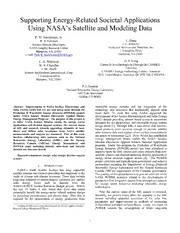
Supporting Energy-Related Societal Applications Using NASA's Satellite and Modeling Data
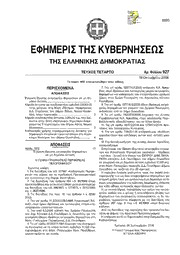
Greek Government Gazette: Part 4, 2006 no. 927

Steve Jobs
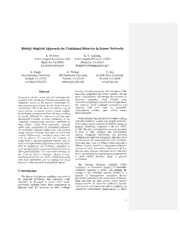
NASA Technical Reports Server (NTRS) 20080013539: Biology Inspired Approach for Communal Behavior in Sensor Networks

Formulation and Optimization of Mucoadhesive Nanodrug Delivery System of Acyclovir.
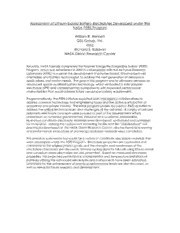
NASA Technical Reports Server (NTRS) 20070017326: Assessment of Lithium-based Battery Electrolytes Developed under the NASA PERS Program
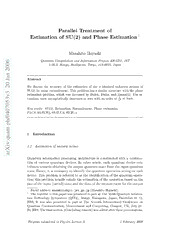
Parallel Treatment of Estimation of SU(2) and Phase Estimation

Shandygaff by Christopher Morley

ERIC ED427347: Road Maps To Understand School Communication.

DTIC ADA454761: Automated Discovery of Mimicry Attacks

The Life of Daniel De Foe by George Chalmers

sürdürülebilirlik raporu 2015
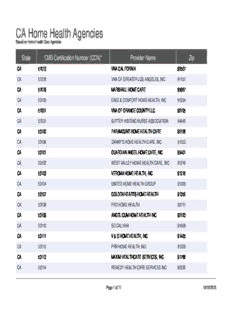
CA Home Health Agencies

ERIC ED362662: Training an Aging Work Force.

Corbows Theory by Lee Wallot

Cadernos-diários de Anita Malfatti
